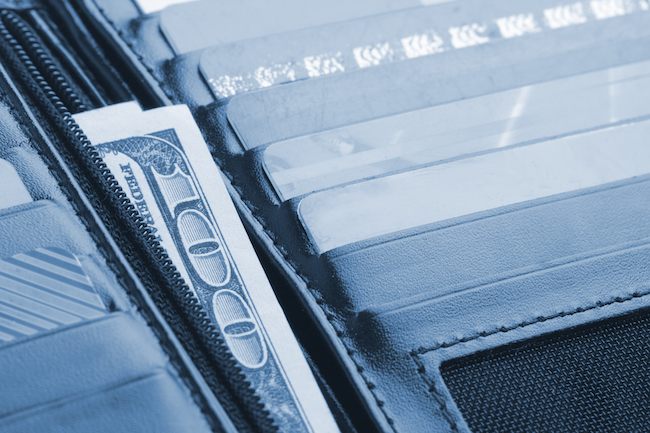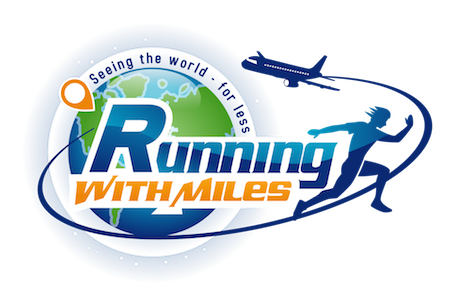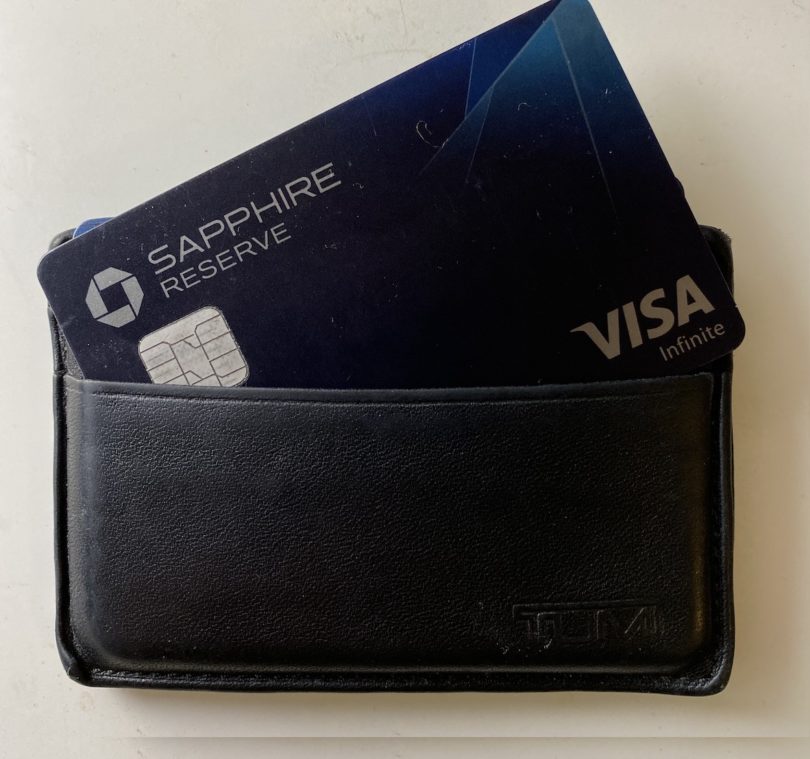This week, we saw the news that the Chase Sapphire Reserve annual fee will be going up $100 after this Sunday. Many people have hit the button to start the cancel train on this card and many others are waiting to see what will happen over the next year. But, we really shouldn’t be surprised that this fee hike has come.
The Chase Sapphire Reserve Fee Hike – Is It Due?
When the Chase Sapphire Reserve applications opened a little over 3 years ago, even Chase was shocked at the amount of people that applied for this new card. In fact, they even ran out of the special metal cards that they were made out of.
What Made the Chase Sapphire Reserve a Great Card

Why did so many people sign up for a $450 annual fee card – especially when the $450 was due in the first month?
- 100,000 Ultimate Reward point sign-up bonus – good for at least $1,500 in travel redemptions
- $300 travel credit each calendar year – equaled $600 in the first cardmember year
- Unlimited guests with the Priority Pass lounge membership
- Redeem Chase points at 1.5 cent per point through the Ultimate Reward portal
Just to name the big bullet points on that card! There were people getting this card that didn’t even travel – they would just take 45,000 Ultimate Reward points back as a statement credit to pay for the $450 annual fee and they were all set! That gave them another $550 in free money at least!
Plus, the travel credit could be used for things like toll passes, rental cars, hotel rooms, airline tickets, metro tickets, travel experiences, and more! It was very easy to get that $600 credited back to you. In fact, you would even earn 3 points per dollar on that amount even though you received that money back (they changed that).
The Problem?
The problem was the acquisition cost to Chase. It can take 2-3 years for a bank to earn back what it cost them to acquire a new customer but the Chase Sapphire Reserve was a whole other kind of card! Here were some of the big cost factors to them for each of those new customers:
- $1,000 in points
- $600 in travel credit reimbursement
- $170-300 in affiliate payout
This isn’t even covering things like Global Entry reimbursement and Priority Pass membership (which I assume both have negotiated rates with card companies).
What was Chase getting in return?
- $450 annual fee
- Less than $100 in transaction fees on the $4,000 spending requirement
The Chase Sapphire Reserve 4 Years Later
That left Chase with (assuming customers went through affiliate links and used the full benefits of the card) about a $1,300 deficit on their customer acquisition – for over 100,000 customers! That’s right, they had over 100,000 applicants in the first two weeks which had been their goal target for the first year!
Chase had said it would take about 4 years to get to a place where they would be making money on this card with cardholders. That is a long time for a card that cost them so much money up front! They did say a lot of customers were holding on to the card after the first year because it was pretty great!
In fact, it has been a top premium travel card since its introduction because it still offered great things like unrestricted $300 travel credit, 3x point earning on all travel and dining, 1.5 cents per point redemption on travel, and lounge access.
Chase Needs to Make Money on the Card
However, Chase obviously needs to really start making money on this card. I honestly do not think we will see them add benefits that will be truly useful to all customers (the Lyft partnership and DoorDash credits are not a meaningful addition for many) because they want to target in on their customers that will continue to use this card without it costing Chase a ton in new perks and features.
Last year, Chase added the restriction that you could not get this card if you have had any bonus from a Sapphire product in the last 48 months. Since this card came out less than 4 years ago, it means you will not be able to get the card again for at least another few months. If you have had a bonus from a Sapphire Preferred in the last 48 months, that will knock you out also.
Between that language and the fact that Chase is approaching that 4 year mark they had mentioned for the acquisition cost to fade away (for those customers that still hold the card – for those that canceled first year, Chase really lost), you can see that Chase wants to really make this card work for them – not just for the customer. Of course, that is the goal of any bank anyway but the Chase Sapphire Reserve has been a bit too-customer centric in the bonus/payout department since its introduction, at least from a banking perspective.
New Bonus Coming At Some Point?
I would not be surprised if we see a new sign-up bonus around the 75,000 point mark on this card in March or thereabouts. It would mean that any person who ever had the Chase Sapphire Reserve would not be able to apply and Chase could use that limited-time bonus to target a new group of customers that may want things like Lyft and DoorDash benefits.
Bottom Line
Am I saying that people should keep paying the annual fee to Chase just because the card has been so good to them in the past? Absolutely not – each person needs to run the math to see if it makes sense to keep this card anymore (for me, it does make sense).
But, I am saying that we really shouldn’t be surprised that this annual fee hike has come. It was almost overdue based on what Chase has put out on this card over the last 3.5 years. I am just glad that they didn’t touch things like the earnings or the redemption rates! Of course, I am also glad they did not restrict the travel credit reimbursement!
Out of all the cards in the space, I think the Chase Sapphire Reserve has really been paying out for customers for quite a long time. Will this $100 fee increase change that? Yes. But, we will have to wait and see if it changes it for enough people that Chase may make another correction to increase benefits.









I disagree with you that the annual fee hike should not be surprising. From Chase’s perspective, there’s two kinds of customers: people who use the card and people who keep it but just don’t use it.
People who don’t use the card are pretty ideal, because they pay a fat $450 fee every year without costing anything. This improves payback for Chase and profitability.
People who use the card help Chase out a lot as well. Their swipe fees go right to Chase’s bottom line. This is even more true since Chase inked (no pun intended) a multi-year deal with Visa to have unlimited swipes with every Chase card for one flat fee. That makes every Chase card swipe instantly earn more for the company. Chase would be making money without that, but with it they have a proverbial gold mine. Having cardholders that Chase has invested in dump their cards because Chase nerfed the card is a poor decision. Just when Chase was in a position to truly profit from these cardholders, they induce the cardholders to cancel the card? Not a great move.
Chase should have left the annual fee alone. If they wanted to offer some benefits that extremely few people would utilize fully for the same annual fee, no harm done. After all, it’s not like Chase paid anywhere near full price for these dubious (for most) benefits, if they paid anything at all. But pretending that these benefits are remotely worth the extra cost is disingenuous at best. Don’t give something of extremely limited value and present it as amazing.
@Christian
The card had an effective annual fee of 150. With that you got
+ a lounge membership valued over $450 (Chase probably has a deal with PP but that cost),
+ some of the best insurance on any credit card,
+ a 50k sign-up bonus (Chase has a $5 billion liability at end of 2018 for points earned by customers)
+ 3% back on dining and travel
+ 50% boost when used points on travel portal. So 3% is 4.5% back and you can transfer points from other no annual fee cards like the Freedom and Freedom unlimited.
And they had even bigger cost back in the first year when people were getting double travel credits and higher sign-up bonuses.
So it may not be a surprise to you simply because you don’t know business. Everyone knew a change eventually had to come. The card was too good at 450
I assume you have the card and will gleefully fork over an extra $100. Have fun.
I’m dumping it. I have too many of these expensive cards and needed to cut one—Chase made my decision a whole lot easier.